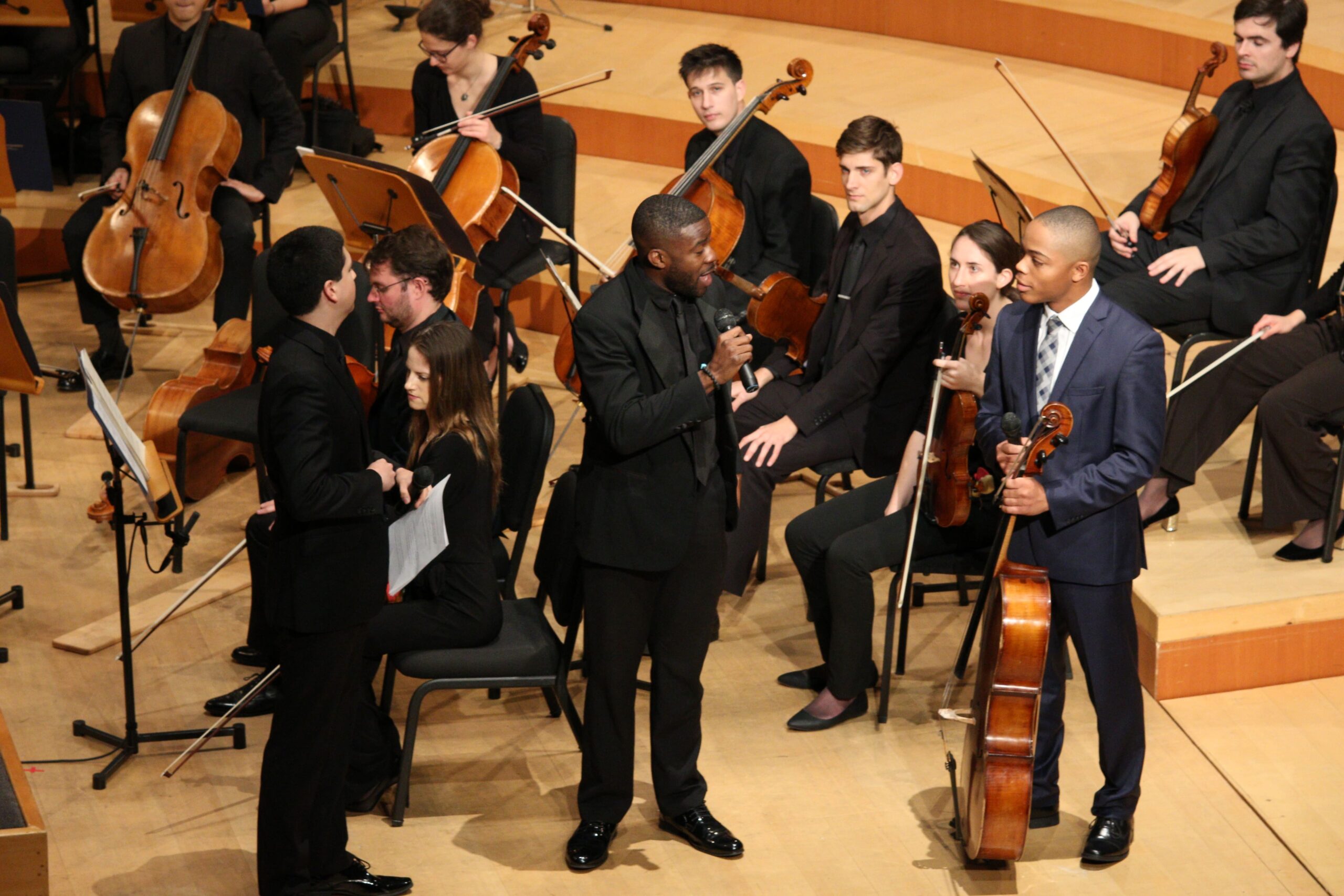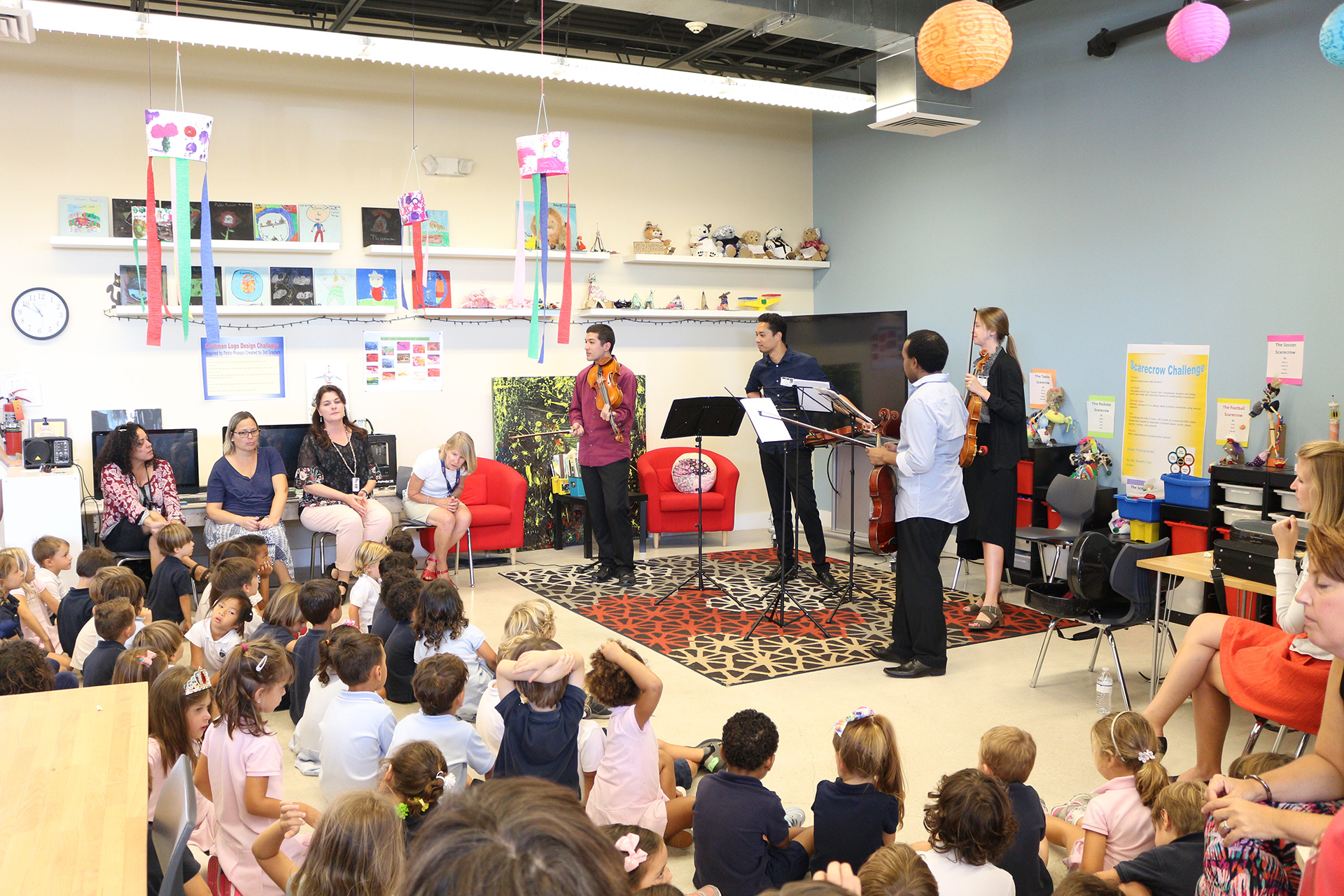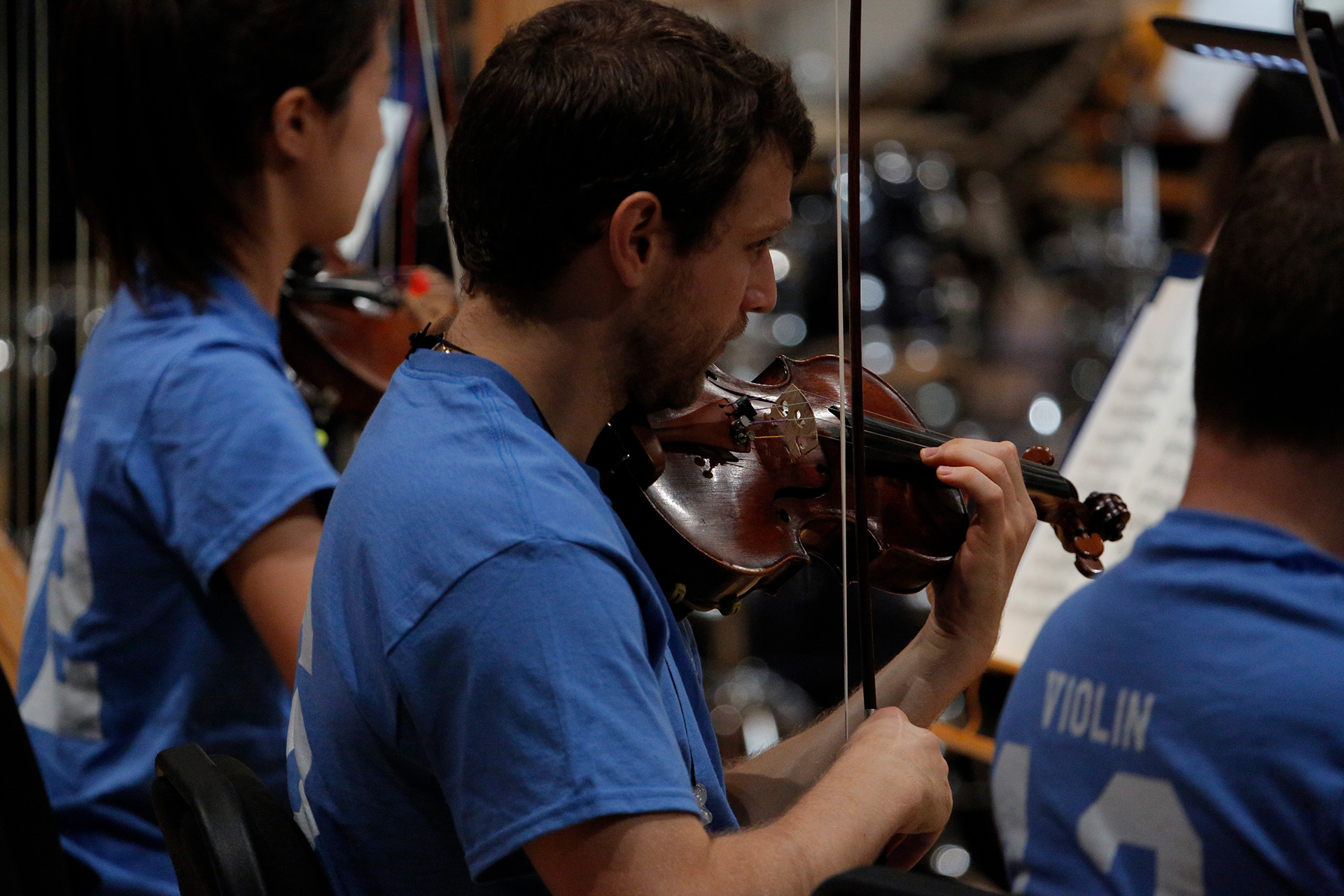Interactive Singing

Goals
Audience will understand compositional techniques of canon, polytonality, heterophony, or monophony through singing.
Overview
Lead the audience in singing to demonstrate how the composer treats melodies in the work.
Process
- Identify compositional approaches in the piece you are playing. Ones that lend well to singing demonstrations might be use of canons, polytonality, heterophony, monophony.
- Identify well known songs that can be used to demonstrate the compositional techniques in question, or use a melody from the piece being performed.
- Introduce a melody. The performer will sing first, and then have the audience sing along.
- For canon: Next, split the audience in two. Have one group start singing, then have the next group enter after a set interval of time (i.e. 4 measures).
- For polytonality: Sing the same melody, but in a different key. Have the audience try this as well. Next, split the audience in two. Lead the audience in singing this melody in two different keys at the same time, with plenty of prep. Alternatively, leave the singing (or playing) at the same time for the performers to demonstrate.
- For heterophony: Introduce a second melody. Rehearse this melody. Now split the audience in two, and lead them in singing these two melodies at the same time.
Audience Type

What does this activity look like in action?
Example Script:
Piece: Charles Ives Piano trio, II. TSIAJ, Presto
Performer: Sometimes, composers want music to sound very orderly. Think about a round, like “row row row your boat”- that song is so organized and tidy that you can lay it over itself and it still sounds very pleasant. Let’s try singing that together in a round- this half of the room start with me and the other half start when our cellist leads you in.
[SING ROUND]
Lovely! But suppose that instead of order, we want something that sounds a bit more chaotic…The composer Charles Ives loved chaos and cacophony in his music. So how might we make our nice tidy row row row your boat sound a bit less mellifluous? One thing we could try would be to start our two groups at the same time, but on different notes. Let’s try that now
[LEAD EACH HALF OF THE ROOM IN SONG INDEPENDENTLY IN TWO DIFFERENT KEYS, THEN COMBINE]
To me, singing the same song at the same time but starting on different notes feels a lot more chaotic than what we did first, even though singing in a round involves starting at totally different times! That effect of starting the same tune on different notes is called polytonality, and Ives uses it a lot in this music, as he combines melodies with harmonies that don’t really share the same notes. Listen to the effect and see how it makes you feel

Modifications
- Depending on the number of performers and age/abilities of the audience, the performer can divide the audience into more than two groups.
- For lower interactivity, performers can demonstrate the singing/playing without involving the audience.
Notes
- A similar activity, but with just rhythm, is “Groove Machine”.
Create interactive performances. We have activities to help you connect with your audiences.


